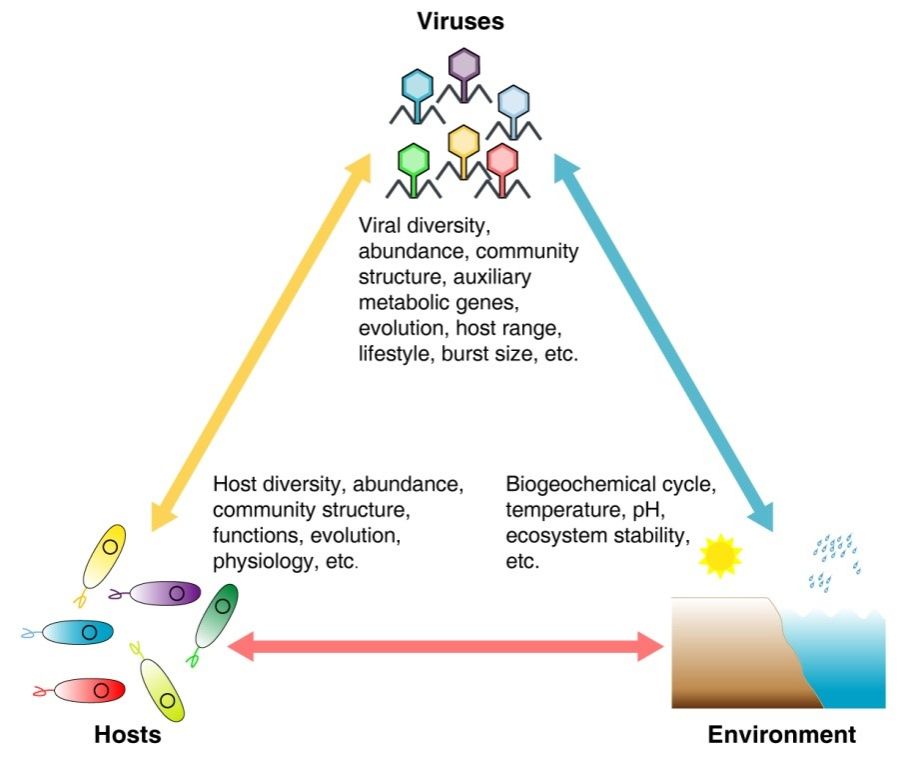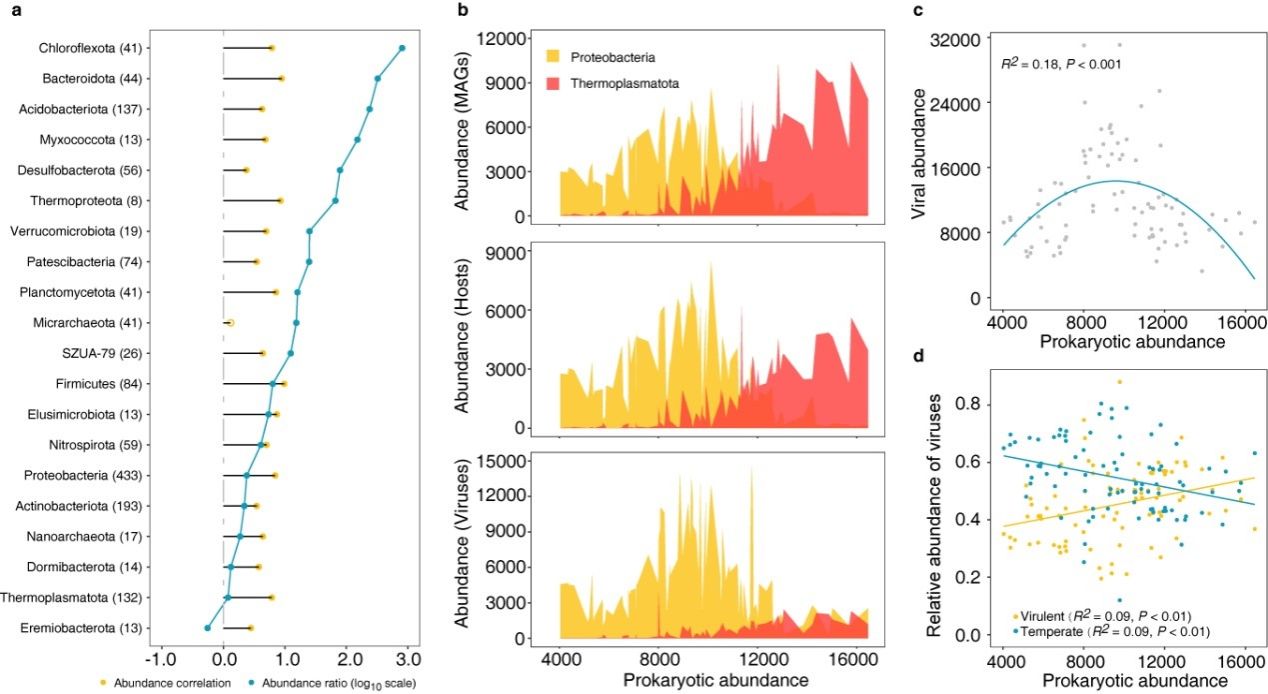At the end of the 19th century, the European scientists discovered the first virus which causes mosaic-like mottling and discoloration on the leaves of tobacco, hence being named as Tobacco mosaic virus (TMV). Since then, the biological triangle of virus, host and the environment was born and has attracted a great deal of interests from the scientists (Figure 1). Historically, our understanding of viral diversity was hampered by the difficulties in isolating viruses as well as the mosaic nature of viral genomes. More recently, meta-omics approaches have been applied to explore the viral ecology in nature. In the last two decades, the diversity, community composition, and also the ecological functions of viruses (mainly phages) in diverse habitats have been revealed by using the sequencing technologies (metagenomics and metaviromics) and theoretical methods (ecology, biogeochemistry, and bioinformatics). However, the biogeographic study of natural viral communities has largely lagged behind their prokaryotic counterparts. Our current understanding of viral biogeography stems from several pioneer studies in marine environments. Therefore, further study of the distribution patterns and the biotic and abiotic drivers of natural viral communities should provide new insights into the viral biogeography.

Figure 1. The virus-host-environment interaction triangle
By applying large-scale metagenomic data from acid mine drainage sediments, Prof. Linan Huang’s team revealed the response of viral taxonomic and functional distribution patterns to prokaryotic communities, geochemistry, climate factors, and geographic distance, improved our understanding of the interactions between virus, host and the environments.
The researchers revealed that viral taxonomic and functional richness follow the latitudinal diversity gradient paradigsm, in general agreement with the diversity patterns of other domains of life. They also identified ferric iron concentration as the most important environmental factor governing viral abundances in the AMD sediments, reminiscent of the Ferrojan Horse hypothesis. For the viral community structure, the analyses revealed a scale-dependent distance-decay distribution of viral taxonomic and functional composition, which are directly and primarily affected by prokaryotic assemblages and indirectly driven by latitude, mean annual temperature and pH (Figure 2). Results also highlighted lineage-specific virus-host abundance ratios that cause a nonlinear and polynomial relationship between total viral abundance and host abundance, and richness-dependent virus-host interaction structure which implies underlying viral infection and host defence mechanisms in natural environments (Figure 3). Finally, their analyses identified a set of pho regulon genes (i.e., phoH and phnCDE) in the predicted viral genomes, and observed dynamic response of gene abundance to the availability of phosphorus in the sediments, indicating an potential important roles of these viruses in phosphorus assimilation for their hosts.

Figure 2. Structural equation modelings showing direct and indirect effects of biotic and abiotic variables on viral communities

Figure 3. Virus-host abundance patterns in AMD sediments
The present study is timely, providing an initial ecological insight into how viral diversity, abundance, community structure, networks, and auxiliary metabolic genes respond to biotic and abiotic factors, improving our understanding of the distribution patterns of viruses populating the natural environments. These results were published online in Nature Communications with the title “Patterns and ecological drivers of viral communities in acid mine drainage sediments across Southern China”. The researchers were also invited by the journal’s editor to write the Behind the Paper Post.
The postdoc Shaoming Gao and Prof. Linan Huang from the School of Life Sciences in Sun Yat-sen University is the first author and the corresponding author, respectively. Sun Yat-sen University is the first organization to complete the research. This work was financially supported by National Natural Science Foundation of China and Natural Science Foundation of Guangdong Province.
Link to the article:
https://www.nature.com/articles/s41467-022-30049-5
Link to the Behind the Paper post:
https://ecoevocommunity.nature.com/posts/the-enigmatic-triangle-in-acid-mine-drainage-sediments-virus-host-and-the-environment